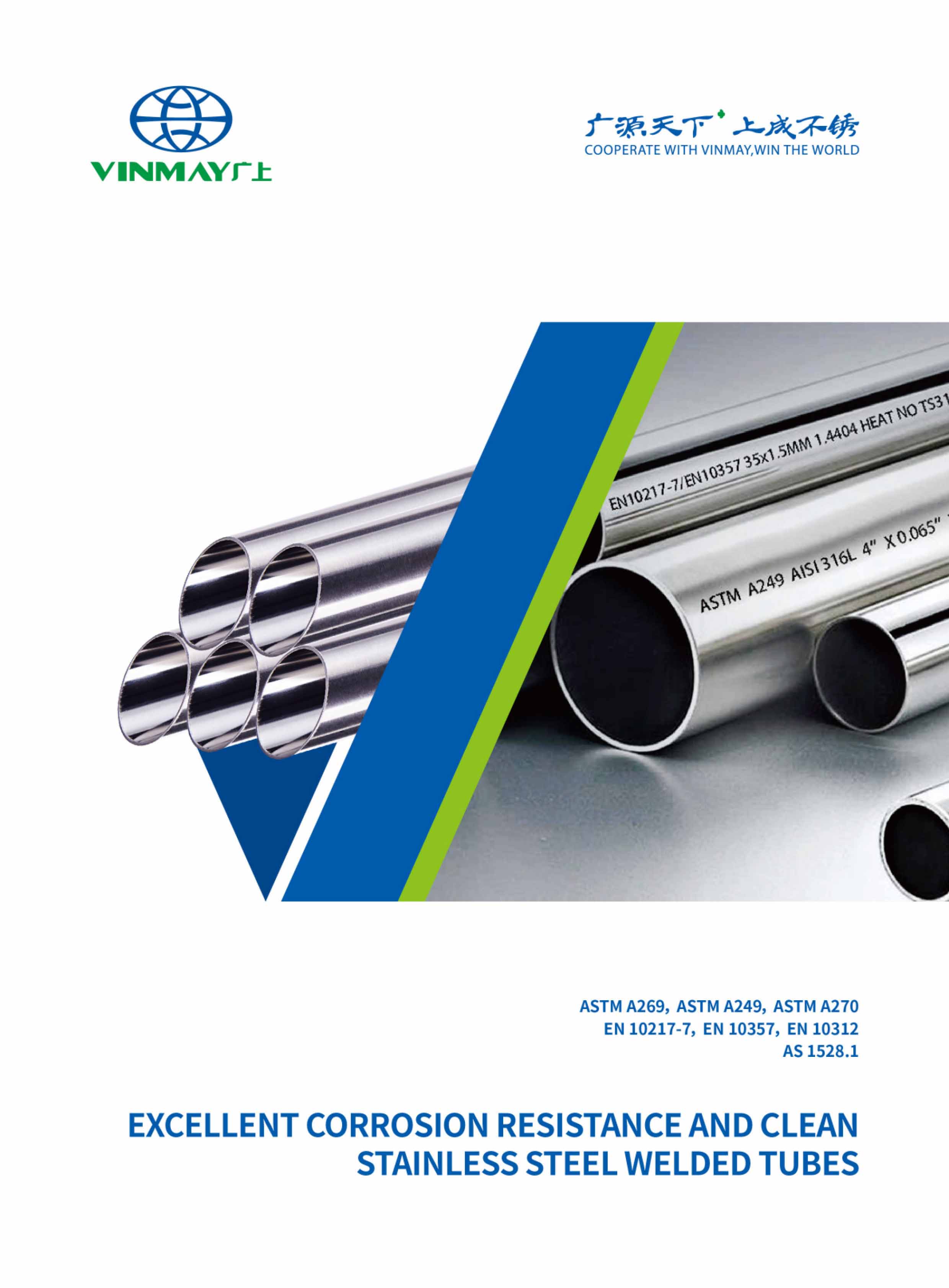As professionals in the stainless steel tube industry, it is essential to understand the importance of stainless steel tube standards for successful and safe operations. Stainless steel tube standards are designed to promote safety, reliability, and quality. Without them, stainless steel tube manufacturers cannot ensure the consistency of their product.
They also help to reduce costs, as they eliminate the need to continually monitor and inspect products.
In addition, stainless steel tube standards provide a common language for communication between buyers and sellers, helping to ensure that everyone is on the same page. Stainless steel tube standards also help to ensure that stainless steel tube materials are compliant with international regulations and standards. This helps to ensure that products are safe, reliable, and of high quality.
With the increasing demand for stainless steel tube products, understanding the stainless steel tube standards that govern them is essential for businesses and consumers alike. These stainless steel tube standards ensure the quality and safety of the products, allowing them to meet the needs of both the industry and the consumer.
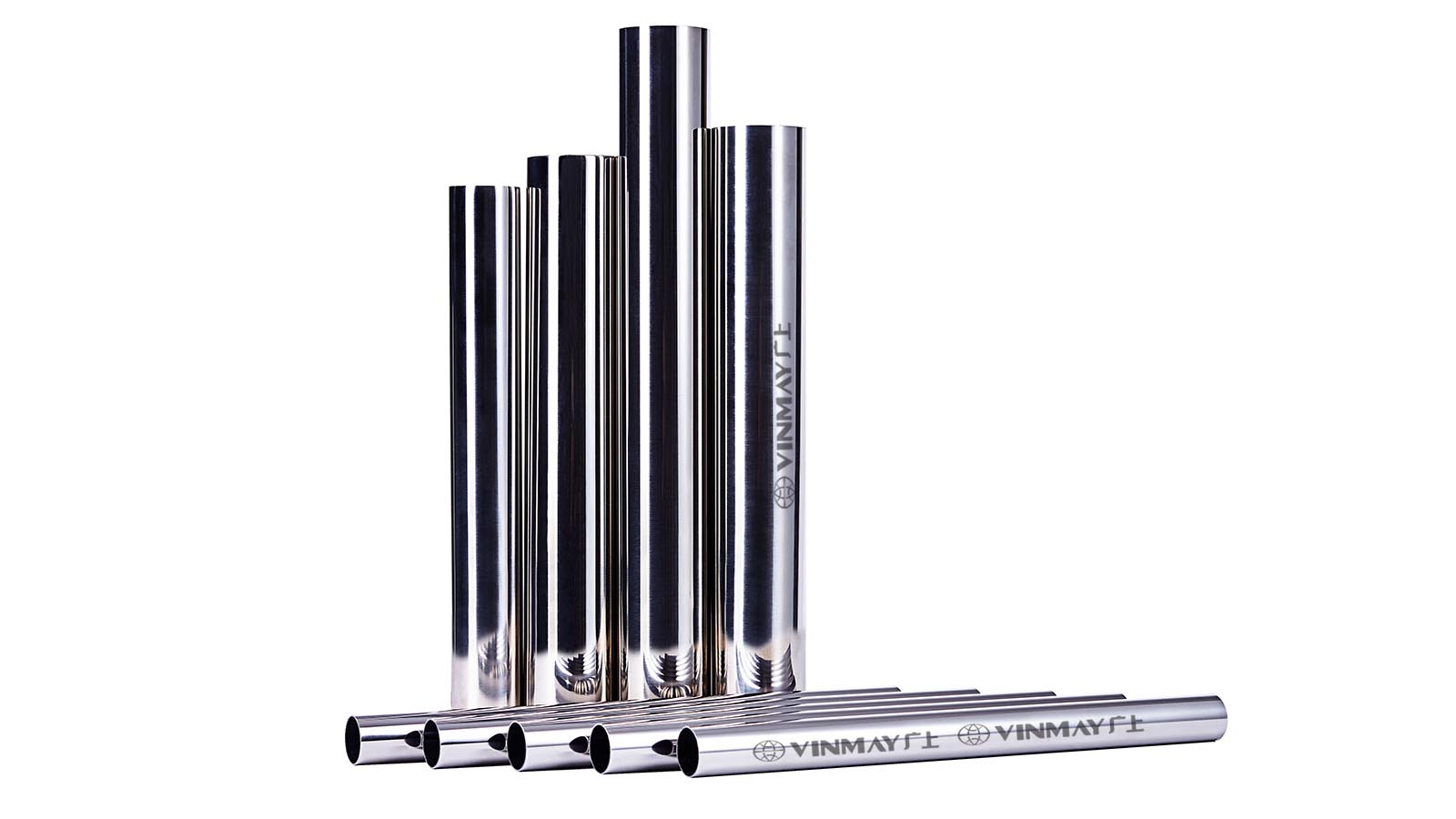
The ASTM International (formerly known as the American Society for Testing and Materials) is an organization that develops and publishes standards for a wide range of materials, products, systems, and services. ASTM standards are widely recognized and used across industries to ensure product quality, safety, and performance.
When it comes to stainless steel tubes, there are a few common stainless steel tube standards that are widely used in the industry. These include:
- ASTM A312
- ASTM A270 /EN10357 / DIN11850
- ASME SB677
All of these stainless steel tube standards are popular for their extremely corrosive resistance.
The ASTM A312 is a stainless steel tube standard specification for seamless and heavily cold-worked austenitic stainless steel tubes
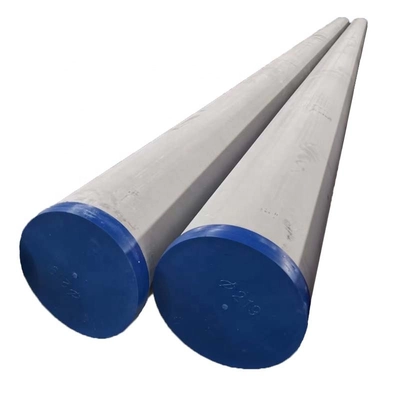
Although ASTM A312 is one of the most commonly used stainless steel tube standards , there are many grades of stainless steel pipe that are suitable for use in its production. The most common grade is 304, which offers excellent corrosion resistance, along with other grades such as 316 and 321. Each grade offers different levels of performance, so it is important to determine the right grade for the specific application.
|
Grade |
Carbon |
Manganese |
Phosphorus |
Sulfur |
Silicon |
Chromium |
Nickel |
Molybdenum |
|
304 |
0.08 |
2.00 |
0.045 |
0.03 |
1.00 |
18.0-20.0 |
8.0-11.0 |
|
|
304L |
0.35 |
2.00 |
0.045 |
0.03 |
1.00 |
18.0-20.0 |
8.0-3.0 |
|
|
316 |
0.08 |
2.00 |
0.045 |
0.030 |
1.00 |
16.0-18.0 |
11.0-14.0 |
2.00-3.00 |
|
316L |
0.35 |
2.00 |
0.045 |
0.030 |
1.00 |
16.0-18.0 |
10.0-14.0 |
2.00-3.00 |
|
Grade |
Tensile Strength, min Ksi (Mpa) |
Yied Strength ,min ksi (Mpa) |
|
304 |
75 (515) |
30 (205) |
|
304L |
70 (485) |
25 (170) |
|
316 |
75 (515) |
30 (205) |
|
316L |
70 (485) |
25 (170) |
|
Tolerance, % from Nominal |
||
|
NPS Designator |
Over (+) |
Under (-) |
|
1/8 to 2 1/2 Incl, aal t/D ratios |
20.0 |
12.S |
|
3 to 18 incl., t/D up to 5% incl |
22.5 |
12.5 |
|
20 and larger, welded all t/D ratios |
17.5 |
12.5 |
|
20 and larger, seamless t/D up to 5% incl |
22.5 |
12.5 |
|
20 and larger, seamless t/D > 5% |
15.0 |
12.5 |
Where:
t = Nominal Wall Thickness
D = Ordered Outside Diameter
ASTM A312 is suitable for a variety of applications, including chemical processing, food processing, pharmaceuticals, and heat exchangers. It is also widely used in the oil and gas industry due to its superior corrosion resistance and strength.
Additionally, ASTM A312 is known for its tight dimensional tolerances and ability to meet the most exacting standards. Its superior properties make it the ideal choice for many applications.
Most stainless steel tubes produced for use in ASTM A270 stainless steel tube standards are grade 304 or 316. Grade 304 is a low-carbon stainless steel alloy, while grade 316 is a higher-carbon alloy. Both grades are highly corrosion-resistant and have excellent mechanical properties. They are also cost effective and offer excellent weldability. The mechanical properties and chemical composition of 304 316 can be referred to above .
Taking into account ASTM A270 stainless steel tube standards, permitted tolerance in wall thickness of stainless steel tubes must be considered. This tolerance is set at +/- 12.5% of the specified wall thickness, and it applies to all sizes of tubes.
The tolerance limit can be varied depending on the particular product, such as by using a tighter tolerance or by increasing the wall thickness.
The purpose of this tolerance is to ensure that the tube meets the specified requirements, and that any defects are minimized.
Forming: The selected stainless steel billets or coils are formed into tubing through various methods, such as hot or cold working processes like extrusion, rolling, or welding. The forming process ensures the creation of tubes with the required stainless steel tube dimensions and specifications.
Heat Treatment: In some cases, heat treatment may be employed to improve the mechanical properties of the stainless steel tubing, such as increasing its hardness or strength. Annealing, quenching, or tempering processes might be used based on the required properties.
Cold Drawing/Cold Rolling: This process involves reducing the diameter and wall thickness of the tubing through cold working, typically to achieve the desired dimensions and surface finish. Cold drawing or cold rolling helps in achieving tight tolerances and a smooth surface finish.
Finishing: Surface finish is crucial for sanitary tubing to meet the specifications outlined in ASTM A270 stainless steel tube standards . Finishing processes like polishing, grinding, or buffing are employed to achieve the required surface roughness and cleanliness, ensuring the tubing's suitability for sanitary applications.
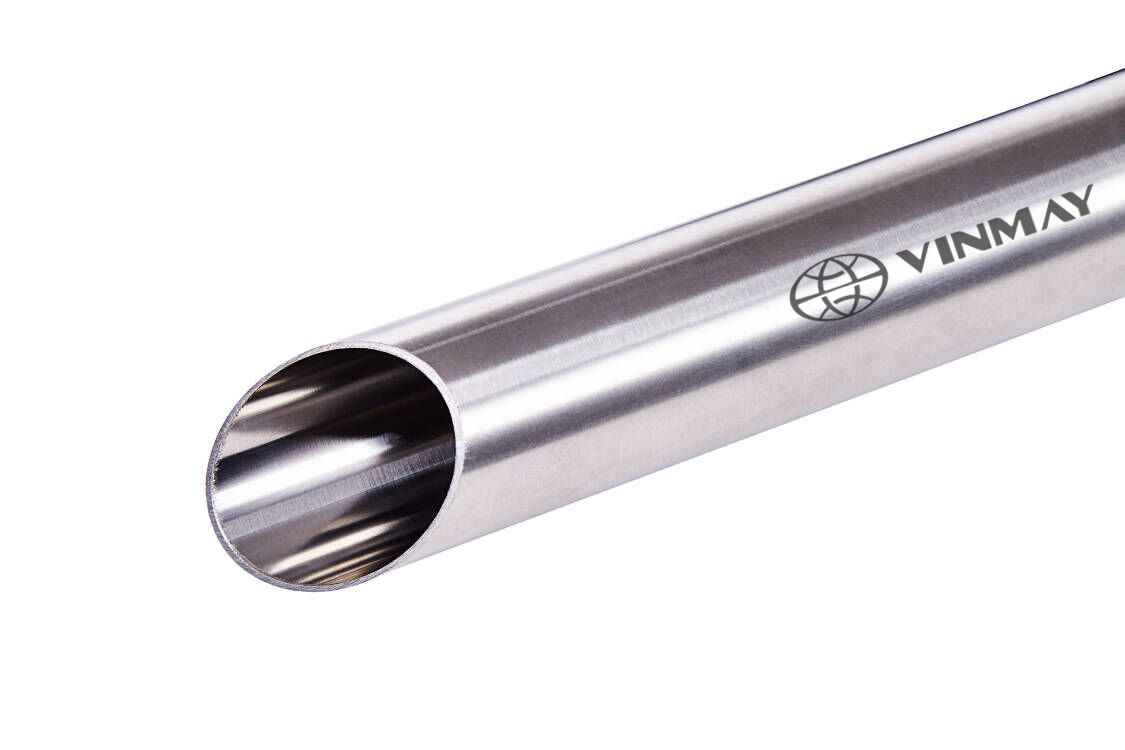
ASTM A270 stainless steel tube standards is commonly used in food, dairy, and beverage industries due to its sanitary requirements and corrosion resistance. It is also used in pharmaceutical and medical industries for its superior hygienic standards.
You may also like:
Stainless steel grade for ASTM A554/EN10296-2 is an important factor to consider when selecting a tube for specific applications. Depending on the grade, stainless steel welded tubes are suitable for different temperatures and corrosive environments.
Generally, the higher the grade, the higher the strength of the tube, making it more resistant to corrosion. The grades that are available include 304, 316, 316L, 409, and 430.
|
Element (Percentage by Weight) |
Grade 304 |
Grade 316 |
Grade 316L |
Grade 409 |
Grade 430 |
|
Carbon (C) |
≤ 0.08 |
≤ 0.08 |
≤ 0.035 |
≤ 0.08 |
≤ 0.12 |
|
Manganese (Mn) |
≤ 2.00 |
≤ 2.00 |
≤ 2.00 |
≤ 1.00 |
≤ 1.00 |
|
Phosphorus (P) |
≤ 0.045 |
≤ 0.045 |
≤ 0.045 |
≤ 0.045 |
≤ 0.040 |
|
Sulfur (S) |
≤ 0.030 |
≤ 0.030 |
≤ 0.030 |
≤ 0.040 |
≤ 0.030 |
|
Silicon (Si) |
≤ 1.00 |
≤ 1.00 |
≤ 1.00 |
≤ 1.00 |
≤ 1.00 |
|
Chromium (Cr) |
18.0-20.0 |
16.0-18.0 |
16.0-18.0 |
10.5-11.7 |
16.0-18.0 |
|
Nickel (Ni) |
8.0-10.5 |
10.0-14.0 |
10.0-14.0 |
- |
- |
|
Molybdenum (Mo) |
- |
2.0-3.0 |
2.0-3.0 |
- |
- |
|
Nitrogen (N) |
- |
- |
- |
- |
- |
|
Copper (Cu) |
- |
- |
- |
- |
- |
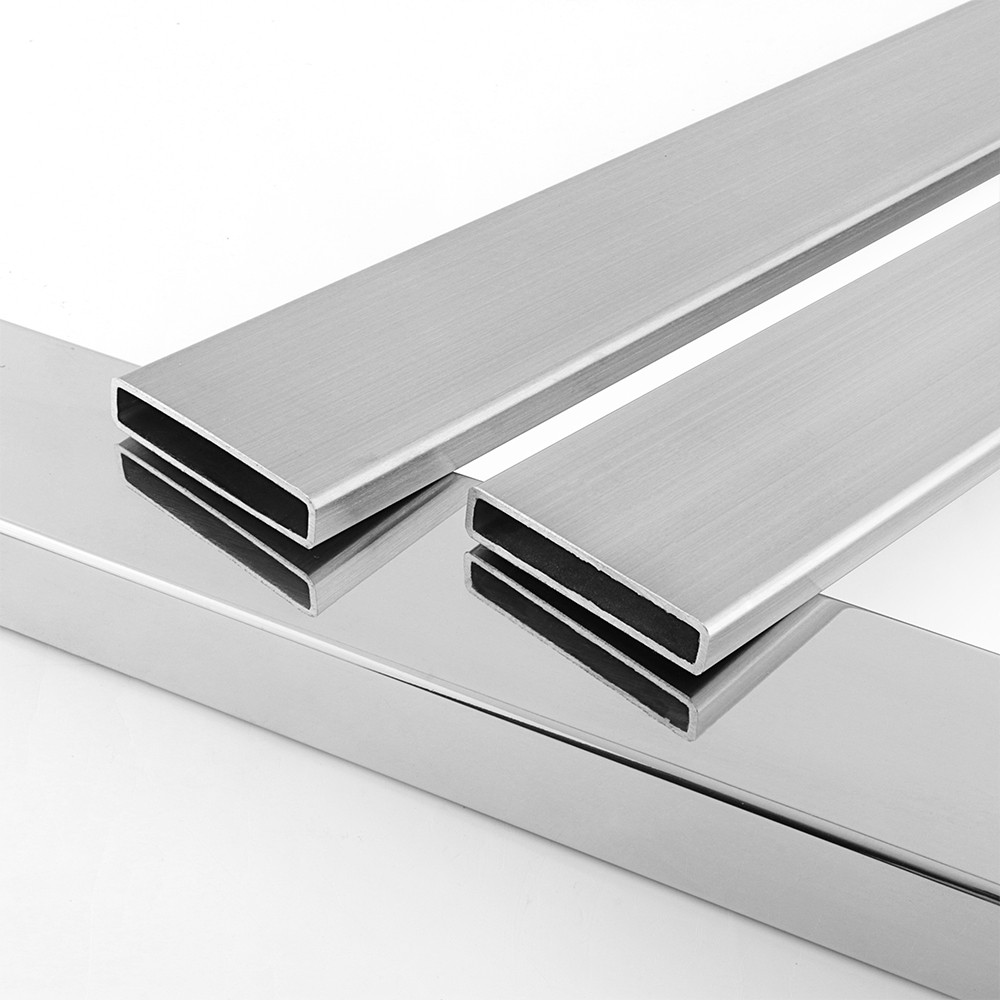
|
Stainless Steel Grade |
Tensile Strength (MPa) |
Yield Strength (MPa) |
Elongation (%) |
Hardness (HRB/HB) |
|
304 |
515 (min) |
205 (min) |
40 (min) |
92 (max) |
|
316 |
515 (min) |
205 (min) |
40 (min) |
95 (max) |
|
316L |
485 (min) |
170 (min) |
40 (min) |
95 (max) |
|
409 |
380 (min) |
205 (min) |
20 (min) |
88 (max) |
|
430 |
450 (min) |
205 (min) |
22 (min) |
183 (max) |
|
Property |
Tolerance |
|
Outside Diameter (OD) |
±0.005 inches (0.13 mm) to ±0.015 inches (0.38 mm), depending on size and wall thickness |
|
Wall Thickness |
±10% to ±12.5% of the nominal wall thickness, depending on specified size and wall thickness |
Tube Formation:
Welded Tube: Stainless steel strips or coils are formed into a tubular shape through various methods like rotary bending, roll bending, or continuous bending processes.
Welding: The formed tube edges are welded together using various techniques such as TIG (Tungsten Inert Gas) welding, laser welding, or high-frequency induction welding, ensuring strong and consistent bonding.
Surface Treatment:
Polishing/Finishing: The tubing surface might undergo processes like polishing, grinding, or buffing to achieve the desired surface finish (e.g., brushed, satin, mirror finish) specified in ASTM A554.
ASTM A554 stainless steel tube standards is used in various industries like architecture, automotive, and construction due to its resistance to rust, strength, and good looks. It's commonly seen in handrails, automotive exhausts, and building structures because it doesn't corrode easily and is strong. Basically, it's a durable, good-looking steel tubing used in many things we see and use every day!

In regards to ASTM A269/ EN10217-7, the stainless steel grade used is of vital importance. It is essential to select the right grade to ensure optimal corrosion resistance, mechanical properties, and weldability.
304 and 316 are the two most common grades, with 304 being the standard grade and 316 containing higher levels of molybdenum, giving it superior resistance to pitting and corrosion.
Other grades such as 321 and 347 are also available, but their uses are usually limited or specialized.
Building on the importance of the mechanical properties of stainless steel grade, the permitted tolerance in wall thickness of ASTM A269/ EN10217-7 is a critical factor to consider.
This standard specifies the requirements for seamless and welded stainless steel tubes intended for general corrosion-resisting and low- or high-temperature service.
It includes the permissible variations in wall thickness, outside diameter, and average wall of tubes.
It also includes the minimum number of tests, and the type of test to be performed for quality control.
ASTM A269 stainless steel tube standards is widely used in industries such as chemical processing, automotive, and medical equipment due to its corrosion resistance and durability. It finds applications in heat exchangers, pipelines, and food processing equipment, meeting stringent standards for cleanliness and reliability. Its versatility makes it a preferred choice for structures, equipment, and systems requiring resilience against corrosion in harsh environments.
Moving on, the next topic to be discussed is ASME SB677, which provides extremely corrosive resistance.
The ASME SB677 standard provides exceptional corrosion resistance for stainless steel tubes in highly corrosive environments. It offers superior resistance to pitting and crevice corrosion, along with extreme resistance to stress corrosion cracking. This standard is widely used in chemical plants, food processing, and other industries where high levels of corrosive agents are present.
The use of this standard ensures that stainless steel tubes are able to withstand the harshest of conditions and maintain their structural integrity. ASME SB677 is a great choice for applications that require maximum corrosion resistance and reliability.
Adhering to the common standard of ASTM A790 provides good resistance to stress corrosion cracking. It is a standard mainly used in the production of stainless steel pipes for various industries. This standard sets requirements for steel composition, chemical analysis, mechanical properties, and testing.
The ASTM A789/ASME SA789 standard covers seamless and welded ferritic/austenitic stainless steel tubing for general services, including duplex stainless steel tubes. All tubes under this standard must be provided in a heat-treated condition as specified by the required temperature and quenching conditions. When final heat treatment is conducted in a continuous furnace or when heat treatment is achieved directly by quenching after hot forming, the number of tubes of the same size and from the same heat lot shall be determined according to the prescribed tube sizes.
The steel must be an austenitic stainless steel with excellent corrosion resistance and a minimum chromium content of 18%. It also requires a maximum carbon content of 0.03%. In addition, the ASTM A790 standard requires a minimum tensile strength of 620 MPa, and a minimum elongation of 25%.
The good resistance on stress corrosion cracking makes it a reliable choice for applications that require extreme corrosion resistance. This marks the conclusion of the explanation of ASTM A790 and its good resistance on stress corrosion cracking.
| Spec. No. | Title | Scope |
| ASTM A 213 | Seamless Ferritic Stainless Steel and Austenitic Stainless Steel Boiler, Superheater, Heat-Exchanger, and Condenser Tubes. | Pressure tubes, made from 16 grades of austenitic stainless steel and from 12 grades of ferritic Cr-Mo Alloy Steel. |
| ASME SA 213 | ||
| ASTM A 249 | Welded Austenitic Stainless Steel Boiler, Superheater, Heat-Exchanger, and Condenser Tubes. | Pressure tubes, made from austenitic stainless steels, (Types 304, 304H, 304L, 305, 309, 310, 316, 316H, 316L, 317, 321, 321H, 347, 347H, 348, 348H, and XM grades.) |
| ASME SA 249 | ||
| ASTM A 268 | Seamless and Welded Ferritic Stainless Steel Tubing for General Service. | 15 grades of ferritic stainless steel tubing for general corrosion resistance and high temperature service. (Types 329, 405, 409, 410, 429, 430, 430Ti, 443, 446, XMs & others). |
| ASME SA 268 | ||
| ASTM A 269 | Seamless and Welded Austenitic Stainless Steel Tubing for General Service. | 13 grades of austenitic stainless steel tubing for general corrosion-resisting and high-temperature service. (Types 304, 304L, 316, 316L, 317, 321, 347, 348 and XM grades). |
| ASTM A 270 | Seamless and Welded Austenitic Stainless Steel Sanitary Tubing. | Austenitic stainless steel tubing intended for use in the diary and food industry in sizes up to and including 4 in. in outside diameter. |
| ASTM A 312 | Seamless and Welded Austenitic Stainless Steel Pipe. | Austenitic stainless steel pipe intended for high temperature and general corrosive service. 22 grades are covered. |
| ASME SA 312 | ||
| ASTM A 358 | Electric-Fusion-Welded Austenitic Chromium-Nickel Alloy Steel Pipe for High-Temperature Service. | For corrosion and high temperature service, normally not less than 8 in. nominal diameter. Types 304, 316, 309, 310, 321, 347, 304L, 316L, 304H, 316H. |
| ASME SA 358 | ||
| ASTM A 376 | Seamless Austenitic Stainless Steel Pipe for High-Temp Central-Station Service. | Austenitic stainless steel pipe intended for high temperature and general corrosive service. Better surface than A312 pipe. |
| ASME SA 376 | ||
| ASTM A 409 | Welded Large Outside Diameter Light Wall Austenitic Chromium-Nickel Alloy Steel Pipe for Corrosive or High Temperature Service. | Nominal diameter 14-30 in. in Schedules 5S and l0S. Types 304, 309, 310, 316, 317, 321, 347, 348, 304L, 316L. |
| ASME SA 409 | ||
| ASTM A 450 | General requirements for Alloy Steel Tubes. | Common requirements for ASTM tubular specifications. |
| ASME SA 450 | ||
| ASTM A 511 | Seamless Stainless Steel Mechanical Tubing. | 27 grades are covered for mechanical applications. Primarily round tubing. |
| ASTM A 530 | General Requirements for Carbon, Ferritic Alloy, and Austenitic Alloy Steel Pipe. | Common requirements for ASTM pipe specifications as listed. |
| ASME SA 530 | ||
| ASTM A 554 | Welded Stainless Steel Mechanical Tubing. | Nineteen grades are covered for mechanical applications. Rounds, squares, rectangles, and special shapes are included. |
| ASTM A 632 | Seamless and Welded Austenitic Stainless Steel Tubing for General Service. Small Diameter. | 9 grades of austenitic stainless steel tubing for general corrosion-resisting and high-temperature service. |
| AMS 556 | Steel Tubing, Corrosion and Heat Resistant 18 Cr; 11 Ni; (Cb + Ta) (SAE 30347) Hydraulic. | Annealed type 321 hydraulic line tubing. Type 1-Seamless Type 2-Welded & Drawn |
| AMS 5557 | Steel Tubing, Corrosion and Heat Resistant 18 Cr; 11 Ni; Ti (SAE 30321)Hydraulic | Annealed type 347 hydraulic line tubing. Type 1-Seamless Type 2-Welded & Drawn |
| AMS 5558 | Steel Tubing, Welded, Corrosion and Heat Resistant 18 Cr; 11 Ni, (Cb + Ta)(SAE 30348) Thin Wall. | High pressure ducting, wall thickness 2% of O.D. or less. Weld bead controlled, X-ray. |
| AMS 5559 | Steel Tubing, Welded, Corrosion and Heat Resistant 18 Cr, 10 Ni, Ti, (SAE 30321) Thin Wall. | High pressure ducting, wall thickness 2% of O.D. or less. Weld bead controlled, X-ray. |
| AMS 5560 | Steel Tubing, Seamless Corrosion Resistant 19 Cr; 9 Ni (SAE 30304). | Annealed type 304 aircraft hydraulic fine tubing. (Not subject to high pressure). Structural. |
| AMS 5561 | Steel Tubing, Welded and Drawn Corrosion Resistant 21 Cr; 6 Ni; 9 Mn High Pressure Hydraulic. | For parts and assemblies such as fluid lines subject to high pressure and requiring corrosion resistance. 1/8 - 1/4 Hard. |
| AMS 5562 | Steel Tubing, Seamless Corrosion Resistant 21 Cr; 6 Ni; 9 Mn Annealed. | Parts and assemblies requiring both corrosion and heat resistance, and having higher strength than 18-8 types. |
| AMS 5565 | Steel Tubing, Welded, Corrosion Resistant 19 Cr; 6 Ni (SAE 30304). | Annealed type 304 aircraft hydraulic line tubing. (Not subject to high pressure), Structural. |
| AMS 5566 | Steel Tubing, Seamless or Welded Corrosion Resistant 19 Cr; 10 N (SAE 30304) High Pressure Hydraulic | Cold drawn type 304, high pressure, aircraft hydraulic line tubing. 1/8 hard. |
| Type 1óSeamless | ||
| Type 2óWelded & Drawn | ||
| AMS 5567 | Steel Tubing, Seamless or Welded Corrosion Resistant 19Cr; 10 Ni (SAE 30304) Hydraulic, Solution Treated. | Fluid lines subject to medium high pressures requiring corrosion resistance. Annealed.(1) Seamless (2) Welded & Drawn |
| AMS 5570 | Steel Tubing, Seamless Corrosion and Heat Resistant 18 Cr; 10 Ni; Ti (SAE 30321). Annealed Structural. | Parts and assemblies requiring both corrosion and heat resistance especially when such parts are welded during fabrication. Requiring oxidation resistance up to approximately 1500?F, but useful at that temperature only when stresses are low. |
| AMS 5571 | Steel Tubing, Seamless Corrosion and Heat Resistant 18 Cr; 11 Ni; (Cb + Ta) (SAE 30347). Annealed Structural. | Parts and assemblies requiring both corrosion and heat resistance especially when such parts are welded during fabrication. Requiring oxidation resistance up to approximately 1500?F, but useful at that temperature only when stresses are low. |
| AMS 5572 | Steel Tubing, Seamless Corrosion and Heat Resistant 25 Cr; 20 Ni (SAE 30310). Annealed Structural. | Parts and assemblies requiring both corrosion and heat resistance especially when welded during fabrication, Requiring oxidation resistance up to approximately 2000?F, but useful at that temperature only when stresses are low. |
| AMS 5573 | Seamless Type 316 Annealed Structural | Parts & assemblies requirinq,,both corrosion and heat resistance up to 1600?F. |
| AMS 5574 | Seamless Type 309S Annealed Structural | Parts & assemblies requiring both corrosion and heat resistance up to 2000?F, especially welded assemblies. |
| AMS 5575 | Steel Tubing, Seamless Corrosion and Heat Resistant 18 Cr; 11 Ni; (Gb + Ta) (SAE 30347). Annealed Structural. | Parts and assemblies requiring both corrosion and heat resistance especially when such parts are welded during fabrication. Requiring oxidation resistance up to approximately 1500?F, but useful at that temperature only when stresses are low. |
| AMS 5576 | Steel Tubing. Welded, Corrosion and Heat Resistant 18 Cr; 10 Ni; Ti (SAE 30321). Annealed Structural. | Parts and assemblies requiring both corrosion and heat resistance especially when such parts are welded during fabrication. Requiring oxidation resistance up to approximately 1500?F, but useful at that temperature only when stresses are low. |
| AMS 5577 | Steel Tubing, Welded, Corrosion and Heat Resistant 25 Cr; 20 Ni; (SAE 30310). Annealed Structural. | Parts and assemblies requiring both corrosion and heat resistance especially when welded during fabrication. Requiring oxidation resistance up to approximately 2000?F, but useful at that temperature only when stresses are low. |
| AMS 5639 | Seamless Type 304 | Cold Finished Mechanical Tube Rockwell 90B max Hardness Corrosion Embrittlement Capability |
| AMS 5645 | Seamless Type 321 | Cold Finished Mechanical Tube Rockwell 90B max Hardness Corrosion Embrittlement Capability |
| AMS 5546 | Seamless Type 347 | Cold Finished Mechanical Tube Rockwell 90B max Hardness Corrosion Embrittlement Capability |
| AMS 5647 | Seamless Type 304L | Cold Finished Mechanical Tube Rockwell 90B max Hardness Corrosion Embrittlement Capability |
| AMS 5648 | Seamless Type 316 | Cold Finished Mechanical Tube Rockwell 90B max Hardness |
| MIL-T-5695 | Tubing, Steel, Corrosion Resistant, (304) Cold Drawn (1/2 or 1/4 Hard) Smls or W&D. | Intended for use in the fabrication of aircraft structural parts requiring a high degree of resistance to corrosion. |
| MIL-T-6737 | Tubing, Steel, Corrosion and Heat Resistant (18-8 Stabilized), Welded.Annealed. | Type 321 and 347 tubing intended for use in the manufactured exhaust-stacks, manifolds, blast tubes, ring collectors and similar applications where a weldable corrosion and heat resisting steel is required or for use at 8000 - 1500?F. |
| (T 321) | ||
| MIL-T-6845 | Tubing, Steel, Corrosion Resistant (304) Aerospace Vehicle Hydraulic System. 1/8 Hard, Seamless, Welded & Drawn. | Intended for use in high pressure hydraulic and pneumatic systems in which corrosion resistant materials are required. The tubing is not suitable for use in applications assembled by welding or brazing or exposed to temperatures higher than 800?F, because of impaired resistance to corrosion, where subsequent anneal not possible. |
| (T304) | ||
| MIL-T-8504 | Tubing, Steel, Corrosion Resistant (18-8) Annealed, Aircraft Hydraulic System. Seamless, Welded. | Intended for use in high pressure hydraulic and pneumatic systems in which corrosion resistant materials are required. This tubing is of lower strength and higher ductility than tubing to Specification MIL-T-6845. May be used to replace MIL-T-6845 tubing but heavier wall thicknesses must be used:Same qualifications regarding welding, brazing & temperature. |
| (T 304) | ||
| MIL-T-8506 | Tubing, Steel, Corrosion Resistant, (304) Annealed, Seamless, Welded. | Intended for use in the fabrication of aircraft parts requiring a high degree of resistance to corrosion. Not to be used in high pressure hydraulic control systems. |
| (T 304) | ||
| MILT 8606 | Tubing, Steal, Corrosion Resistant (18-8 Stabilized). Annealed. Seamless, Welded & Drawn. | Intended for use in applications which require a high degree of resistance to corrosion or to temperatures in the range of 800?F-1500?F. or in applications which involve welding. Suitble for use in tank-automotive equipment for hydraulic and mechanical applications. |
| (T 304L) | ||
| (T 321) | ||
| (T 347) | ||
| MlL-T-8808 | Tubing, Steel, Corrosion Resistant (l8-8 Stabilized), Aircraft Hydraulic Quality. Annealed, Seamless, Welded & Drawn. | Intended for use in high pressure hydraulic and pneumatic systems where corrosion and heat resistance are required and in which welding or brazing may be involved during fabrication. Resists oxidation at temperatures to 1200?F, but is useful at that temperature only when stresses are low. |
| (T 321) | ||
| (T 347) | ||
| MIL-T4973 | Tubing, Steel, Corrosion Resistant, Aerospace Vehicle Hydraulic System. 1/8 Hard. Seamless, Welded & Drawn. | Intended for use in high pressure hydraulic and pneumatic systems where corrosion and heat resistance are required and in which welding or brazing may be involved during fabrication. Suitable for use in temperatures to 1200?F, when stresses are low. |
| (T 304L) | ||
| (T 316L) | ||
| (T 321) | ||
| (T 347) | ||
| MIL-P-1144 | Pipe, Stainless Steel, (Corrosion Resisting). Seamless or Welded. Annealed. | Pipe is intended for high-temperature and hydraulic br other pressure service under general corrosive conditions. |
| (T 304) (T 304L) | ||
| (T 316) (T 316L) | ||
| (T 321) (T 347) |
The above table is excerpted from : https://www.tubeweb.com/Stainless-Steel-Tube/stainless-steel-tube-specifications.html
In conclusion, comprehensive understanding of stainless steel tube standards is essential for successful application. With this knowledge, it is possible to identify the right type of steel for the intended purpose, ensuring that the project is completed to the highest quality.
The most commonly used stainless steel standards are ASTM A312, A790, and A269. Each of these standards has its own advantages and disadvantages, depending on the project requirements.
The ASTM A312 standard is most suitable for seamless stainless steel pipes and tubingBoth of these standards offer good resistance to stress corrosion cracking.
On the other hand, the ASTM A269 standard is suitable for heat exchanger and condenser tubing applications. This standard is more resistant to corrosion and provides good strength at high temperatures.
In conclusion, stainless steel tubes are an important material for a variety of applications.
The various standards for stainless steel tubes are essential in ensuring the quality and consistency of these materials.
Understanding the common standards can help ensure the proper selection and use of stainless steel tubes for the desired application.
Foshan Vinmay Stainless Steel Co.,ltd is a large-scale international enterprise which concentrates on manufacturuing and selling of stainless steel welded tubes and the related fittings.
Our advantages in production technology and capacity: With 30000 square meters' workshop, we own over 60 continnously forming lines , providing a wide range from diameter 6mm to 219mm with thickness from 0.4mm to 6.0mm. Our designed annual output is more than 40000 tons.
If you are planing to purchase stainless steel tube recently , please feel free to contact us today!


